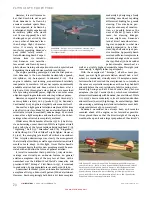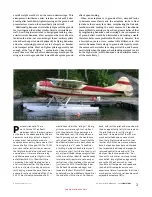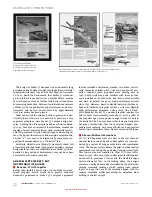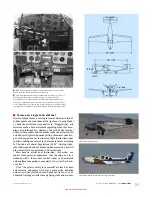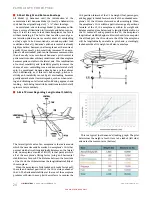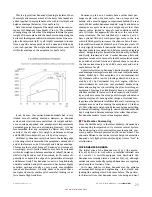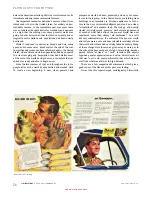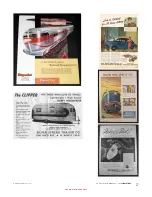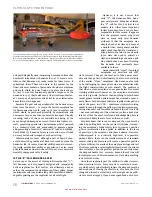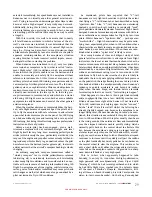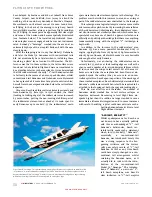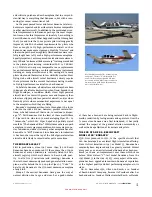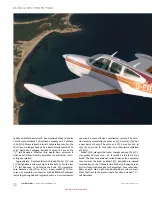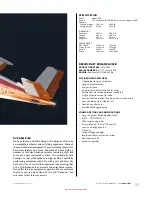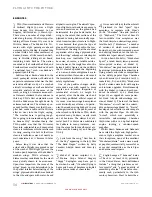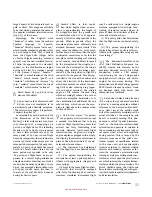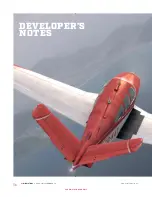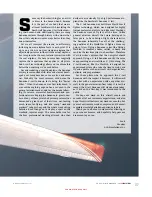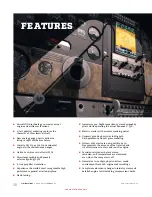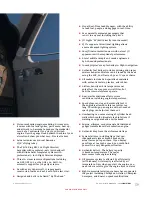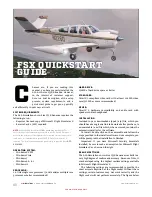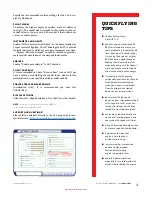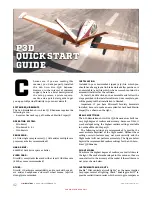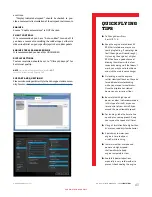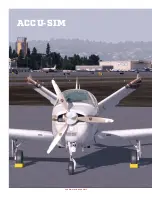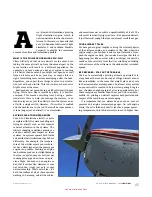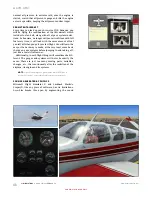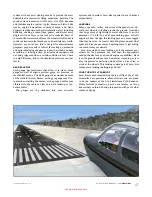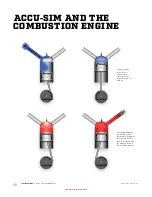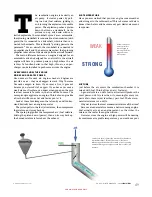
34
A2A
SIMULATIONS :::
ACCU-SIM V35B BONANZA
FLYING INTO THE FUTURE
FOR SIMULATION USE ONLY
ENDNOTES
1
TWA (Transcontinental and Western
Airlines) Flight 599 was a flight
from Kansas City, Missouri to Los
Angeles, California on 31 March 1931.
There were a number of stops sched-
uled along the way. The first stop after
taking off from Kansas City was to be
Wichita, Kansas. The Fokker F.10 Tri-
motor with eight passengers aboard
never made it to Wichita. It crashed into
a wheat field a few miles southwest of
Bazaar, Kansas, a little more than half-
way to Wichita, killing all on board,
including Knute Rockne. The nation
mourned as if a President had died, and
President Hoover called Rockne’s death
“a national loss,” such was Rockne’s
popularity and fame.
Public outcry at Rockne’s death in the
crash prompted aviation officials and
experts to commence what was the first
extensive official study of a crashed
aircraft’s wreckage as well as a detailed
scientific analysis of the cause of the
crash, setting an intensive aeronauti-
cal forensic standard that continues to
this day. TWA’s first explanation was
that the Fokker was brought down by
extreme turbulence. The evidence pre-
sented for this theory was that the co-
pilot had made a radio call to Wichita
after an hour into the flight, saying,
“The weather here is getting tough.
We’re going to turn around and go back
to Kansas City.” Another theory that
TWA posited was that the Tri- motor
flew into undetectable and unreported
clear- air turbulence which overstressed
its wing, causing it to fail. At that time
clear- air turbulence was not nearly as
well understood as it became in later
years.
Before long it was clear that the
actual and officially recognized cause
of the crash of TWA Flight 599 was the
break- up and departure of the Fokker’s
wooden wings. TWA’s attempts to
blame weather conditions for the crash
were quickly shown to be erroneous.
Upon close inspection, the cause of the
wings’ break- up was determined to be
the partial interior delaminating of the
wings’ plywood skin which was bonded
to the ribs and spars with water- based
aliphatic- resin glue. The aircraft’s pre-
vious flights in rain and its exposure to
rain and moisture on the ground had
deteriorated the glue bond inside the
wing to the extent that sections of the
plywood covering had eventually sepa-
rated from its under- structure in flight.
It was deemed that given the type of
glue and the materials used in the con-
struction of the wing that the eventual
separation of the wings’ plywood skin
and the wings’ subsequent catastrophic
break-
up was inevitable. The acci-
dent was, of course, a terrible misfor-
tune; however, the tragic loss of such a
beloved public figure and the publicity
that it created sparked the beginning
of a new and more enlightened era in
aviation accident forensics and caused
the immediate institution of dozens of
safety regulations.
One of the positive changes which
were made was with regard to more
regular and intensive inspection of
commercial aircraft. As might be
expected, after the Rockne crash and
the widely published official report of
its cause, wooden-
winged aeroplanes
went distinctly out of favour. In partic-
ular, the wooden- wing Fokker F.10 was
no longer trusted by the public, most of
who refused to fly in them. TWA, which
operated many Fokkers, nearly went
out of business. The slower but all-
metal Ford Tri- Motor was substituted
for Fokkers in many instances, set-
ting the stage for future all- metal air-
liners such as Boeing 247 and Douglas
DC- 2/3.
2
Lyric from the song, “New Sun in
the Sky” appearing in the 1953 film
“The Band Wagon” written by Betty
Comden, Adolph Green and Alan Jay
Lerner
3
Medal of Honor recipient U. S.
Marine Corps Colonel Gregory
“Pappy” Boyington may have put it
best when he said, “(Combat) flying is
hours and hours of boredom sprinkled
with a few seconds of sheer terror.”
4
It was not until 1963 that Beechcraft
produced its first “sport” type
aeroplane to compete with Piper’s
PA-
28 “Cherokee” line and Cessna’s
172 “Skyhawk.” The first of Beech’s
low-
to-
middle line aeroplanes was
the fixed tricycle- undercarriage entry-
level Model 23 “Musketeer,” a number
of versions of which were produced
during the 1960s with increased power
and seating intended for the low- to-
middle level sport aircraft market.
In 1966 Beech Model 19, “Musketeer
Sport,” a toned- down, lower- powered,
lower-
priced version of Model 23
“Musketeer” was produced, intended to
be a trainer which would be attractive to
flying schools and clubs as competition
to the wildly popular Piper Cherokee
140 and Cessna 150. From 1966 to 1979,
models A19, B 19 and M19 “Musketeer
Sport” versions were built with engine
and interior upgrades. Simultaneously
with the Model 19 trainer, Beech pro-
duced Beechcraft 23-
24 Musketeer
Super III, an upgraded, more power-
ful fixed tricycle- undercarriage ver-
sion of Model 23. The last of the Beech
“Musketeer” aircraft was the retract-
able undercarriage Model 24 “Sierra,”
developed to be similar to and compete
with the popular Piper PA-
28R-
200
“Arrow” which was essentially a
retractable undercarriage Cherokee
180/Archer with a 200 hp fuel injected
engine turning a constant-
speed
propeller.
Whilst Beech Bonanza and Debonair
have ruled the high- end, high perfor-
mance light aeroplane market since
their inceptions, none of the excellent
“Musketeer/Sierra” series were nearly
as popular, commercially successful or
as market competitive as their Piper
and Cessna counterparts.
5
English usage of “bonanza” dates
back to at least 1829, primarily
in the United States. Basic definitions
include “a thing that produces excel-
lent results” and “a great quantity of
something of value.” It was also com-
monly used, particularly in the 19th
century American West to describe a
Summary of Contents for BONANZA ACCU-SIM V35B
Page 1: ...A2ASIMULATIONS BONANZA ACCU SIM V35B BONANZA ...
Page 3: ...A2ASIMULATIONS BONANZA ACCU SIM V35B BONANZA ...
Page 5: ...www a2asimulations com ACCU SIM V35B BONANZA A2ASIMULATIONS 5 FOR SIMULATION USE ONLY ...
Page 27: ...www a2asimulations com ACCU SIM V35B BONANZA A2ASIMULATIONS 27 FOR SIMULATION USE ONLY ...
Page 58: ......
Page 68: ...68 A2ASIMULATIONS ACCU SIM V35B BONANZA www a2asimulations com FOR SIMULATION USE ONLY ...
Page 112: ......

